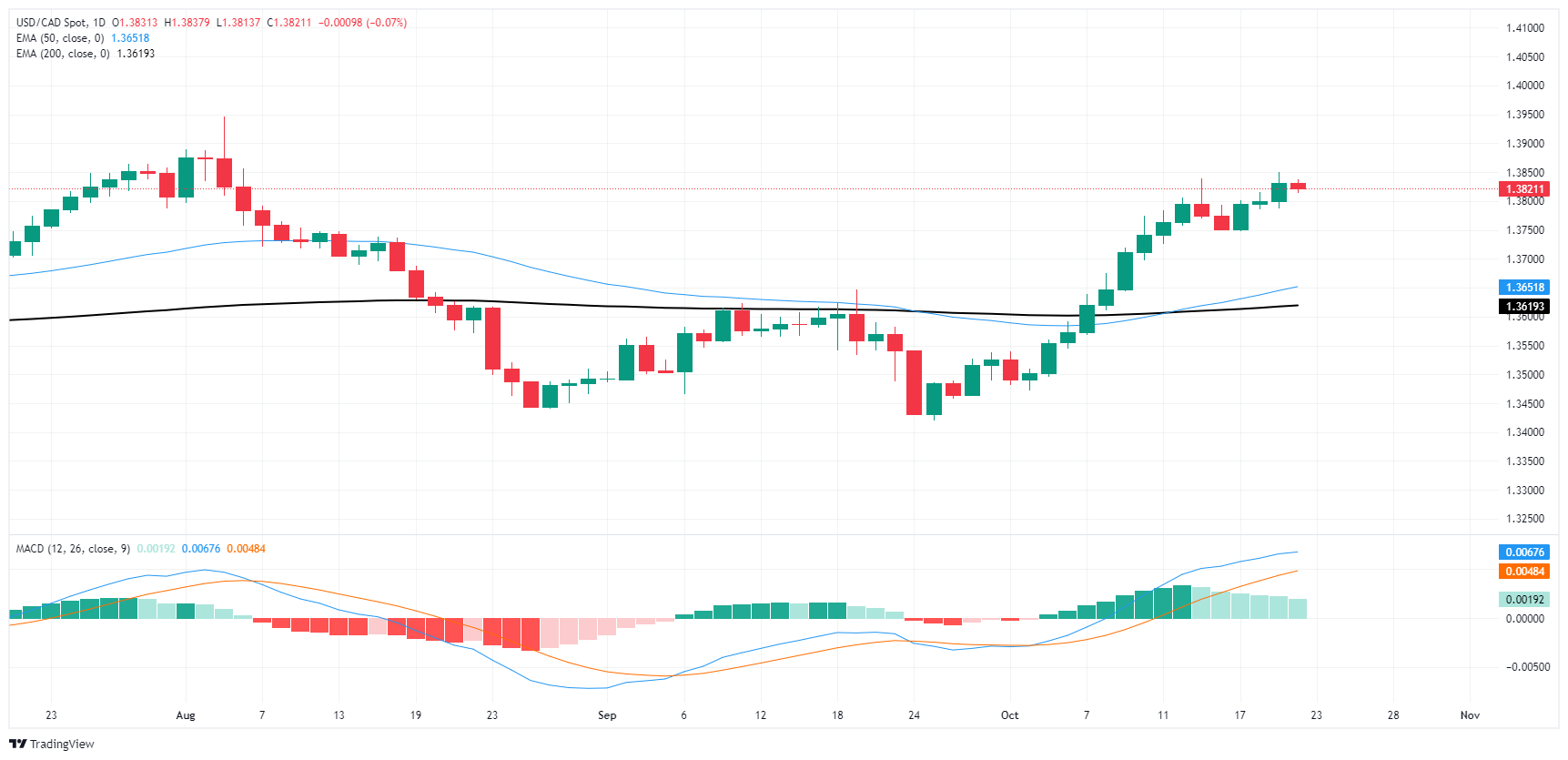Canadian Dollar churns ahead of BoC rate call
- The Canadian Dollar spun in place on Tuesday.
- Bank of Canada rate call looms large on Wednesday.
- The CAD is down roughly 3% against the Greenback since late September.
The Canadian Dollar (CAD) churned chart paper on Tuesday as Loonie traders shuffle in place ahead of the Bank of Canada’s (BoC) impending rate cut due during the midweek market session. Investors broadly expect the BoC to trim interest rates by a further 50 bps on Wednesday, which could further kick the legs out from beneath CAD traders.
Canada saw another decline in raw materials and industrial prices as inflation continues to drain out of the slowing Canadian economy. Despite handily defeating most aspects of inflation in 2024, the BoC is heading for a rocky patch as the Canadian economy lurches toward an economic slowdown at a faster pace than many anticipated at the beginning of the year.
Daily digest market movers
- The Canadian Dollar found a reprieve from recent weakness against the US Dollar on Tuesday, trading within a tight tenth of a percent range.
- The BoC is widely expected to deliver a 50 bps rate cut on Wednesday to combat a lagging economic landscape.
- The BoC’s main reference rate hit a 23-year high of 5.0% mid-2023.
- The BoC has already cut interest rates 75 bps since June of 2024, bringing the current rate down to 4.25%.
- The Canadian Raw Material Price Index declined another 3.1% in September, missing the forecast -1.7% and matching the previous month’s -3.1%.
- Canadian Industrial Produce Prices and declined another 0.6% MoM in September, worse than the forecast -0.5% but recovering slightly from August’s -0.8% contraction.
Canadian Dollar price forecast
The USD/CAD pair has recently shown a strong recovery after bouncing off the 200-day exponential moving average (EMA) near 1.3619, with the price currently consolidating around the 1.3820 mark. The upward momentum was driven by a series of higher lows that followed the late September bottom. The 50-day EMA at 1.3651 has also turned upward, providing additional support for the bullish trend. While the recent price action shows signs of consolidation, the underlying trend remains positive as long as the pair holds above the 50-day EMA.
Momentum indicators, particularly the MACD, confirm this bullish sentiment. The MACD line remains above the signal line, although the histogram has started to show a slight decrease, suggesting a possible slowdown in bullish momentum. A breakout above the psychological level of 1.3850 could open the door to further upside, targeting the 1.3900 region. However, if the pair breaks below the 50-day EMA, it may indicate a deeper retracement, with 1.3650 acting as the first line of defense for buyers. Traders should watch for a potential breakout or a pullback to confirm the next directional move.
USD/CAD daily chart
Canadian Dollar FAQs
The key factors driving the Canadian Dollar (CAD) are the level of interest rates set by the Bank of Canada (BoC), the price of Oil, Canada’s largest export, the health of its economy, inflation and the Trade Balance, which is the difference between the value of Canada’s exports versus its imports. Other factors include market sentiment – whether investors are taking on more risky assets (risk-on) or seeking safe-havens (risk-off) – with risk-on being CAD-positive. As its largest trading partner, the health of the US economy is also a key factor influencing the Canadian Dollar.
The Bank of Canada (BoC) has a significant influence on the Canadian Dollar by setting the level of interest rates that banks can lend to one another. This influences the level of interest rates for everyone. The main goal of the BoC is to maintain inflation at 1-3% by adjusting interest rates up or down. Relatively higher interest rates tend to be positive for the CAD. The Bank of Canada can also use quantitative easing and tightening to influence credit conditions, with the former CAD-negative and the latter CAD-positive.
The price of Oil is a key factor impacting the value of the Canadian Dollar. Petroleum is Canada’s biggest export, so Oil price tends to have an immediate impact on the CAD value. Generally, if Oil price rises CAD also goes up, as aggregate demand for the currency increases. The opposite is the case if the price of Oil falls. Higher Oil prices also tend to result in a greater likelihood of a positive Trade Balance, which is also supportive of the CAD.
While inflation had always traditionally been thought of as a negative factor for a currency since it lowers the value of money, the opposite has actually been the case in modern times with the relaxation of cross-border capital controls. Higher inflation tends to lead central banks to put up interest rates which attracts more capital inflows from global investors seeking a lucrative place to keep their money. This increases demand for the local currency, which in Canada’s case is the Canadian Dollar.
Macroeconomic data releases gauge the health of the economy and can have an impact on the Canadian Dollar. Indicators such as GDP, Manufacturing and Services PMIs, employment, and consumer sentiment surveys can all influence the direction of the CAD. A strong economy is good for the Canadian Dollar. Not only does it attract more foreign investment but it may encourage the Bank of Canada to put up interest rates, leading to a stronger currency. If economic data is weak, however, the CAD is likely to fall.
